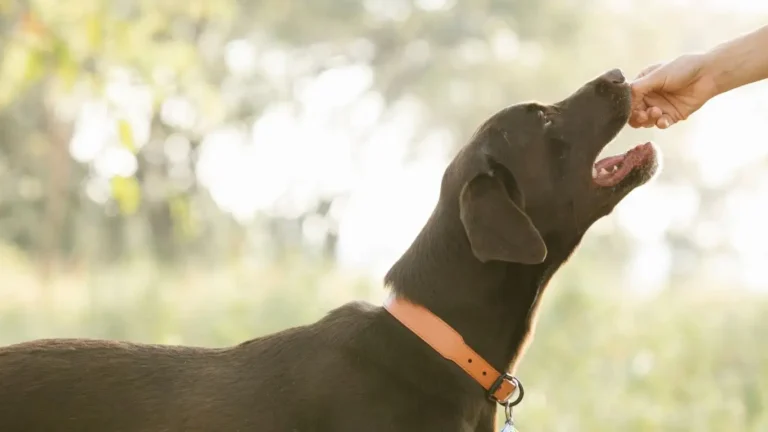Stop Your Dog from Barking at Video Calls with Simple Training Tips
Some dogs bark at video calls. It’s a behavior that can catch people off guard, especially in quiet homes or during work meetings. While the barking may seem sudden, it’s usually your dog reacting to something they don’t fully understand. They hear voices, see faces—but no one is really there. That confusion can feel threatening or overstimulating.
This guide explores gentle, effective ways to help your dog stay calm during video calls. It’s built on real-world experience with canine behavior, using both training techniques and emotional awareness. If your dog struggles with this, you’re not alone—and it can get better.
Signs and Symptoms
Dogs respond to video calls in different ways. Barking is one of the more obvious signs, but it’s not the only one. Understanding your dog’s response is the first step to helping them.
- Excessive barking when a call starts or during the conversation
- Whining, pacing, or circling the room
- Staring at the screen or trying to get behind it
- Growling or alert postures—ears forward, tail stiff
- Hiding, retreating, or trying to leave the room
These behaviors may reflect confusion, frustration, or even mild fear. Dogs rely on consistent cues. A disembodied voice or fast-moving screen images can feel unfamiliar and hard to interpret.
Causes
Most dogs don’t naturally understand video calls. What they see and hear can confuse their instincts. Here’s why barking happens during virtual meetings:
- Sensory mismatch: They hear a familiar voice but can’t smell the person.
- Protective instincts: Some dogs feel the need to defend their space from what they perceive as an intruder.
- Overstimulation: Bright lights, moving images, and unpredictable sounds can make them feel overwhelmed.
- Lack of socialization: Dogs who haven’t been exposed to screens or different voice tones may find the experience unsettling.
- Reinforced behavior: If barking once led to attention (like you turning off the call), it may become a learned response.
Understanding the reason behind the barking will guide how you respond. It also builds empathy. Your dog isn’t misbehaving—they’re doing their best to make sense of a strange situation.
When to Get Help
Not all barking needs professional intervention, but sometimes it’s worth reaching out. If your dog’s distress escalates or disrupts their daily life, support from a trainer or vet can make a difference.
- The barking continues even after multiple training attempts
- Your dog becomes aggressive during or after calls
- They refuse to enter the room where calls happen
- Other anxiety symptoms show up—loss of appetite, destructive chewing, or accidents indoors
Persistent distress could signal deeper anxiety. A certified trainer or behaviorist can help uncover the root cause and tailor solutions to your dog’s needs.
Treatment
Helping a dog stop barking at video calls takes patience and consistency. The goal isn’t to stop the barking overnight—it’s to build comfort and trust over time.
1. Desensitization
This approach gradually reduces your dog’s sensitivity to video calls. Start with short, low-stimulation exposures. For example, play a quiet video of someone talking while your dog relaxes nearby. Reward calm behavior with praise or a small treat.
Over time, increase the volume or duration. The key is to avoid triggering a barking response. Go slowly. Let your dog set the pace.
2. Counterconditioning
This method changes your dog’s emotional response to the trigger—in this case, video calls. Every time a video call begins, offer something your dog loves: a high-value treat, a puzzle toy, or playtime. Over several sessions, they’ll begin to associate calls with good things.
Try this even if barking has already started. If you calmly give a treat after they settle, they’ll learn that being quiet brings rewards.
3. Create a Safe Zone
Some dogs do better with distance. Set up a cozy, quiet spot away from the call. Use a favorite blanket or bed. Add a chew toy or something soothing. Let your dog rest there during your meetings.
This gives them an escape and reinforces the idea that they don’t need to be involved in the call at all.
4. Use Calm Commands
If your dog knows basic commands like “quiet” or “place,” reinforce those gently. Practice outside of call times. Keep your tone soft and encouraging. Never yell—dogs pick up on our emotional energy. Calm instruction builds confidence.
5. Reduce Overall Stress
Sometimes barking during calls is just one part of a bigger picture. Make sure your dog gets daily exercise, regular mealtimes, and mental stimulation. Bored or under-stimulated dogs are more likely to react to small triggers.
6. Tech Tweaks
Lower the call volume or dim the screen. Use headphones when possible. These small adjustments reduce sensory input that might be overwhelming for your dog.
Practical Tips for Everyday Life
You don’t have to train your dog perfectly. Instead, aim for manageable change. Here are some realistic adjustments to make daily life easier:
- Schedule video calls when your dog is most relaxed—after a walk or meal
- Use baby gates to create gentle boundaries without isolation
- Keep a treat pouch nearby to reward calm behavior quickly
- Let others on the call know you’re working on this—they’ll usually understand
- Turn on background music or white noise to mask voices from the screen
Training doesn’t need to be rigid. Some days will go better than others. That’s normal. Small wins add up over time.
Building Trust Over Time
Every dog has a different threshold for what feels safe or overwhelming. What works for one might not work for another. Pay attention to your dog’s body language. Are their ears soft or stiff? Are they licking their lips or wagging their tail?
Respect their signals. If they need a break, give it. Over time, consistent kindness builds resilience. Your dog learns that nothing bad happens during calls—and that they’re not alone.
Studies have shown that dogs are excellent at reading our tone and facial expressions. If you approach training with calm confidence, they’re more likely to follow your lead.
When Professional Support Matters
If the behavior doesn’t improve or seems to get worse, don’t hesitate to reach out. A professional dog trainer—especially one certified in positive reinforcement methods—can offer support tailored to your situation. In some cases, a veterinarian may recommend calming supplements or further evaluation.
There’s no shame in asking for help. Barking isn’t a sign of failure. It’s a form of communication. With time, patience, and the right approach, even the most persistent behaviors can shift.
Final Thought
Helping your dog feel safe during video calls is a gift—for both of you. It strengthens trust, reduces stress, and makes home life more peaceful. You don’t have to be perfect. You just have to be present and patient.
And if progress feels slow, that’s okay too. Your dog is learning something new. Every calm moment is a step forward. If you ever feel stuck, a professional is just a call—or video call—away.






